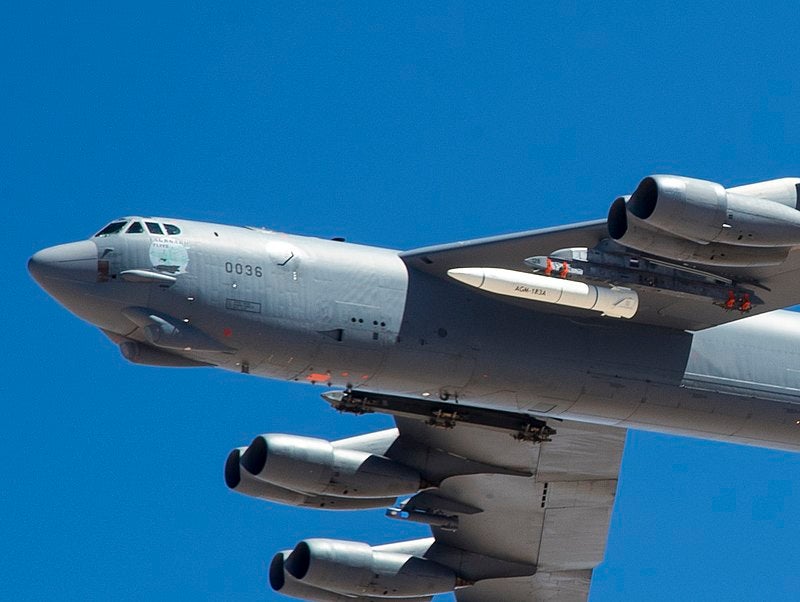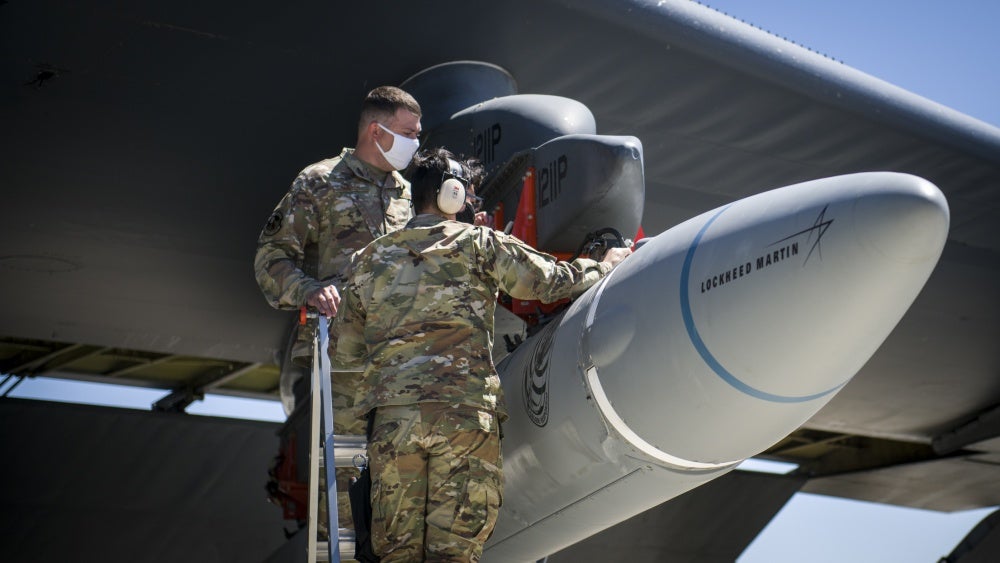Three For Three Failed ARRW Booster Flight Tests In 2021
The United States Air Force’s third booster flight test for its hypersonic AGM-183A Air-launched Rapid Response Weapon has failed. All three booster flight tests for the hypersonic missile have failed, with all three tests taking place this year.
According to the Air Force, an “unknown issue” resulted in the launch sequence for the missile to be aborted before the booster could be released during a December 15 flight test. “The missile will return to the factory and analysis of the telemetry and onboard data will begin immediately,” the Air Force said in a statement. “The program will seek to resume flight test as quickly as possible.”
The ARRW has had three booster flight tests to date. A test on April 5 failed after the missile was unable to complete its launch sequence, and a July 28 test failed after the ARRW’s booster motor failed to ignite after successfully demonstrating a full release sequence from the B-52 launch platform. USAF weapons Program Executive Officer Brig. Gen. Heath A. Collins said in August that the cause of the April test’s failure is understood and was corrected, and did not cause the July test failure, while analysis into that failure was underway.

The series of failures calls into question whether the Air Force’s aims of starting ARRW production in fiscal 2022 are achievable, with the Air Force’s fiscal 2022 budget request allocating $161 million for the first 12 production missiles. While ARRW manufacturer Lockheed Martin inaugurated an “intelligent factory” in Courtland, Alabama in October to manufacture it and other hypersonic weapons systems, Collins has stated that two successful flight tests would be required for production to be approved. Similarly, a “prolonged” root cause analysis of the July failure and “excessive” redesign of the missile in response could also affect the Air Force’s ability to make the next ARRW testing window.
The ARRW program is now a year behind previous USAF acquisitions chief Will Roper’s claims that a powered flight would be made by the end of 2020. While the successful demonstration of the ARRW launch sequence in the August test and the successful test detonation of an ARRW warhead in July represent bright spots for the program’s test record this year, the other test failures would suggest that the program’s maturity simply is not capable of matching Roper’s original schedule, if it were ever feasible to begin with.

